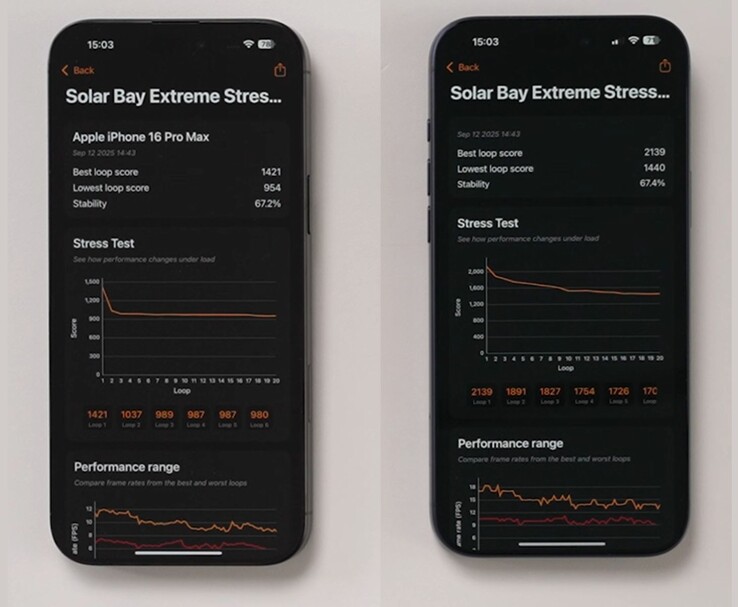The iPhone 17 Pro was revealed with several changes in design, camera, and battery life, but one of the biggest upgrades is the addition of vapour chamber cooling. The new and supposedly improved cooling system makes sense, especially since the A19 Pro chip has reportedly shown strong performance, particularly in the GPU department.
As a result, when popular YouTuber The Tech Chap reviewed the Apple iPhone 17 Air, we got to see how the iPhone 17 Pro stacks up against the other iPhones in this year’s series as well as last year’s iPhone 16 Pro Max.
So, in the 3DMark Solar Bay Extreme stress test, which runs for about 20 minutes and measures ray tracing performance over extended periods, the iPhone 17 Pro with the high-spec A19 Pro chip achieved a stability score of 61.4%. Meanwhile, the more affordable iPhone 17 with the A19 chip managed a stability score of 66.2%, which is noticeably better.
Both the iPhone 17 and iPhone 17 Pro recorded similar Lowest loop scores of 1,211 and 1,298, respectively. However, the performance gap widened significantly when looking at the Best loop scores, 1,831 for the iPhone 17 and 2,116 for the iPhone 17 Pro.
This also means that while the A19 Pro chip is pretty powerful and users are better off with the iPhone 17 Pro Max if they want the Best performance among all the iPhones. The iPhone 17 Pro Max recorded the highest Best and Lowest loop score of 2,139 and 1,440 respectively, with an overall stability of 67.4%.
Another interesting insight from the benchmark was that the iPhone 16 Pro Max and the iPhone 17 Pro Max showed nearly identical stability during the stress test. This suggests Apple has balanced the increased performance with improved thermals, as the difference is very significant. The iPhone 16 Pro Max’s Best loop score of 1,421 is actually slightly lower than the iPhone 17 Pro Max’s Lowest loop score.
The video mainly focuses on the iPhone 17 Air’s performance, so you can watch it in full through the link below if you’re interested. Looking at the benchmark figures, at least from this particular test, it appears that the slightly less powerful A19 Pro, with one less GPU core, in the iPhone 17 Air scores even lower than the base iPhone 17.

































